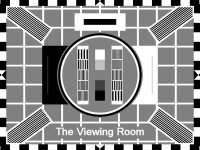
Keltica
via satellite 2000 - 2003
Introduction
In the fevered atmosphere of political and constitutional change which swirled around western Europe in the 1990s, new nations were forged (although some were genuine) and old identities and allegiances were regained.
The Celtic nations were not to be left out of this process, and a group of enthusiasts and idealists came together in 1998 to realise a common dream - of a television service which would give the Celtic languages of Europe a combined presence in the world of international television.
Thus it was that Keltica was born, springing to air in the early part of 2000 from a converted warehouse on the Dublin riverfront.
In fact, the name of the service itself was a matter of heated debate for some months prior to the launch. Whatever name they came up with was bound to be fraught with difficulties: "Celtvision" and "Celtic International Television" were both rejected, partly on the grounds that, a) they were English or French names and b) that there would be far too many people who would think it was intended for Scottish football fans.
Finally, the name "Keltica" was agreed on, even though at least half the Celtic languages have no letter 'k' in them. All was compromise, sweetness and light, but this issue was a precursor to greater difficulties ahead.
So it was that Keltica first went to air on the Astra satellite on 18th March 2000.
| To a sting of synthesised bombard (the Breton instrument which sounds like the result of a clarinet breeding with a fire alarm) and harp, the basic Keltica ident faded in - Celtic knot first, followed by the station name in a suitably ethnic font. | 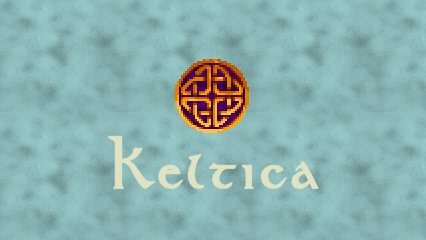 |
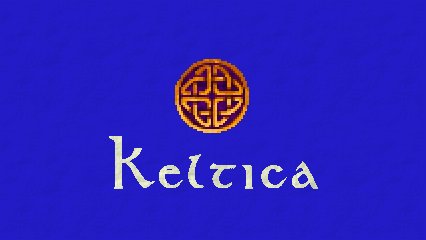 |
In order to give some degree of identity to each of its language services, it had been decided that each one (which would be 'stripped' through an evening's programming) would have its own variant in its own colour (the colour to be as close to each country's 'national colour' as possible). Thus Scotland had blue... |
| ...Ireland green... | 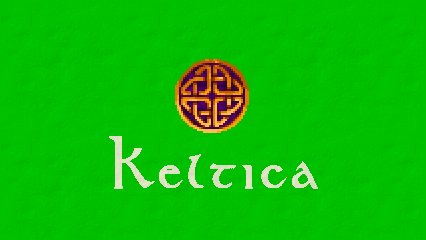
|
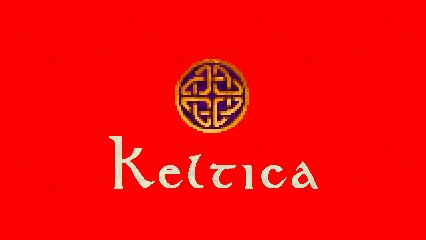
|
...Wales red... |
| ...Brittany white... | 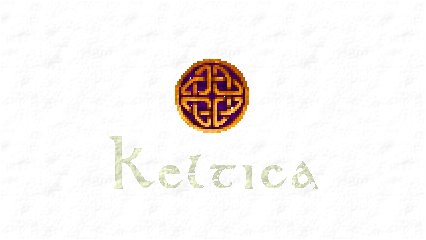
|
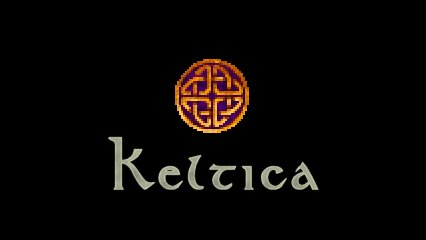
|
...Cornwall black... |
| ...and the Isle Of Man... well, here was a problem. Wales had already claimed red, and the other countries had had first dibs on most of what was left of the spectrum. Keltica's executives pondered, and gave the Island grey, although they tried to sweeten the pill by referring to it officially as 'silver'. Few were fooled. | 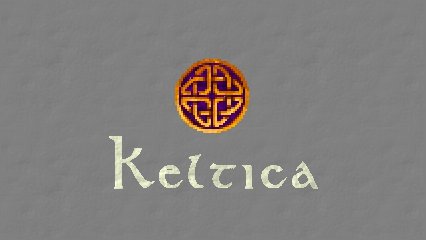
|
These idents were shown between programmes,
and if they occurred at a junction between two language strips,
they would morph from the colour of the preceeding language to the
colour of the next. This could produce some weird sights, especially
as the graphics computer seemed to be powered by the RAM disk from
a Commodore 64, and sometimes stuck at some terrifyingly impertinent
hue somewhere inbetween.
At the start of each programme in a strip,
the ident would be equally distinctive, tailored with a
service name and an emblem representing each country.
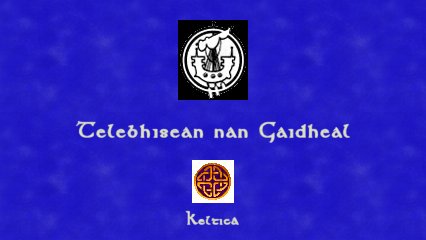
|
For Scotland, bearing in mind that Gaelic was most directly identified with the Hebrides, that emblem was a lymphad or traditional galley. That this was the official symbol of the Western Isles didn't go down to well elsewhere in the Gaidhealtachd (the Gaelic-speaking area). Indeed, one island voiced plans for its own TV station. These foundered, however, when it was clear that "Skye TV" would never get off the ground. |
| In order to be as non-sectarian as possible, the Irish service settled for a harp. | 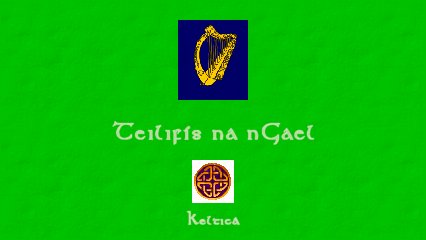
|
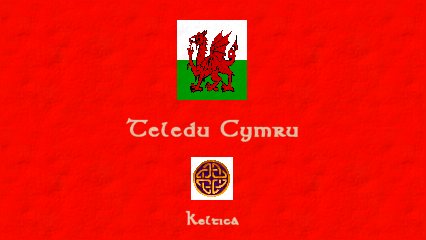
|
Wales' emblem was inevitable enough... |
| ...and the national flag ("Gwenn ha du" - "black and white") also formed the basis of the Breton... | 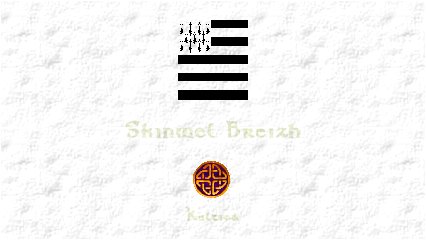
|
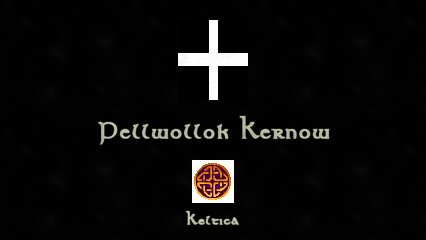
|
...Cornish (the cross of St. Piran)... |
| ...and Manx (trinacria) idents. | 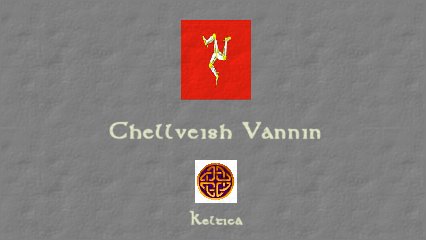
|
The station immediately ran into a serious technical difficulty. No-one had quite tumbled to the fact that the Breton service could not be received where it was intended to, because Brittany used the French SECAM transmission system rather than the PAL system which was in operation everywhere else. To solve this required leasing uplink stations in France which could convert from one standard to another and rebroadcast the service terrestrially. This, of course, was expensive, and as advertising revenues were hard to come by, such a fundamental miscalculation was hardly helpful.
There were other problems, too, of the kind you only get when dealing with languages with little or no official status : namely, precisely which version or dialect of the language should be used. This was a particular problem with the Cornish service, due to an ongoing civil war between two parties of activists, each intent on promoting their own standard. In the end, it came down a question of who was actually making the programme as to which version was used. With so few people speaking the language with any experience of broadcasting, the station had to make do with what it could get. The same applied to the Manx service.
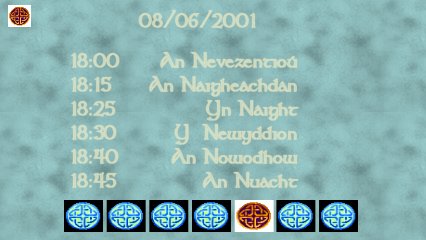
|
Keltica did its best, however ropey the arrangements may have been. This menu slide shows the early-evening news strand which formed the first hour of each day's transmissions. The Breton bulletin was first simply because they were an hour ahead of the other countries. This, along with the Welsh, Irish and Gaelic news, usually featured on-location reports; Manx and Cornish bulletins were entirely studio-bound, and sometimes were reduced to nothing more than voice-overs to captions. Still, it's the thought that counts... |
The row of knots along the bottom was a real innovation, with necessity as its mother. Putting the name of the day on the caption in six languages would have been, to say the least, untidy. So Keltica hit upon the idea of a line of seven knots in a strap-line at the bottom. Each knot represented a day of the week, and the one which showed in the 'proper' Keltica colour would indicate which day it was. This illustration shows that it was a Friday, as the fifth knot is highlighted.
Even this wasn't without its problems, though. It all depended on whether you started counting your days of the week from Sunday or Monday. Confusion could have reigned, but most of the station's viewers knew which day it was anyway, and everyone got used to it.
| It must always be said in Keltica's defence that they provided programming which no other station could. This was especially true in the case of the three languages which had little or no native television. This is a publicity caption for Skinwel Breizh's "Fest Noz", a programme of traditional music and dance, filmed in village halls and other venues throughout Brittany. This one featured the folk group An Diaouled. | 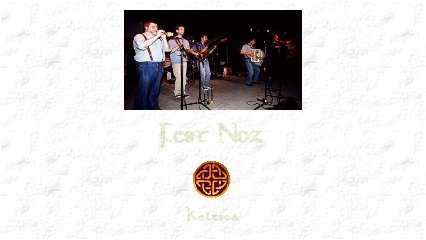
|
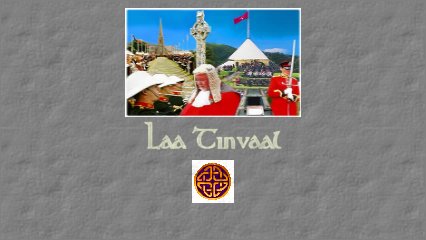
|
This caption promoted Chellveish Vannin's Manx-language coverage of the annual Tynwald Day ceremonies - the first time there had ever been coverage of the event in the Island's own language. |
Idealism and enthusiasm in television are, sadly, no substitute
for money, and Keltica had struggled from the very beginning.
Even allowing for the fact that they were catering for small minorities
in any case, Keltica's audiences were minuscule, and a worldwide
downturn in advertising revenue finally sent the station tumbling
out of orbit.
They stuck at it for as long as they could, but the writing was
on the wall (in six languages).
|
So it was that on the evening of February
28th 2003, those viewers remaining were greeted by a series
of captions advertising the service's imminent demise. This
one was for the Irish-language transmission "Teilifís
na nGael". In translation, it reads, "Keltica's Television services will close tonight. Many thanks for
being with us these last three years. Goodbye until next
time!" The evening's programmes ran as scheduled until 11.30 p.m., when the same set of messages was shown in a loop for fifteen minutes, until the screen finally faded to black, and then the signal cut out for the last time. |
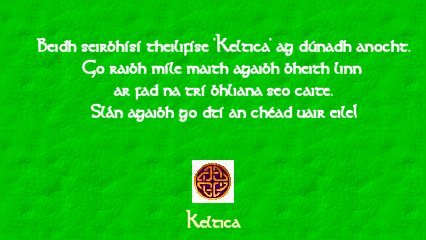
|